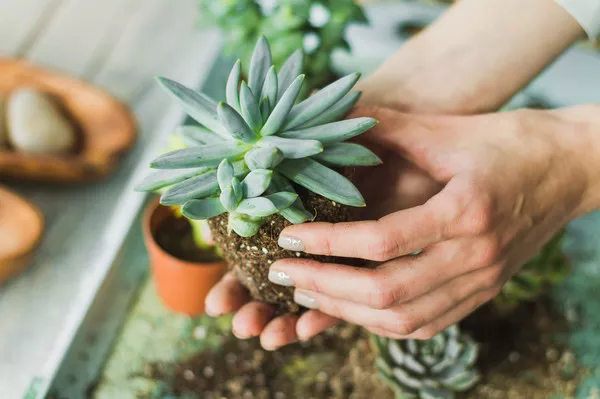Cultivating succulents can be a rewarding experience, but it comes with its challenges, and one common adversary that succulent enthusiasts often encounter is the persistent presence of mealybugs. These small, sap-sucking pests can wreak havoc on your beloved succulents, compromising their health and aesthetics.
Understanding Mealybugs and Their Impact on Succulents
Mealybugs are tiny insects that belong to the family Pseudococcidae and are known for their white, cotton-like appearance. They feed on the sap of plants, including succulents, by piercing the plant tissue with their needle-like mouthparts. This feeding behavior can lead to stunted growth, yellowing of leaves, and even the death of the affected succulents. Mealybugs also secrete a sticky substance called honeydew, which can attract ants and promote the growth of sooty mold.
Identifying Mealybugs on Succulents
Early detection is crucial for effective mealybug control on succulents. Keep a close eye on your plants and regularly inspect them for signs of infestation. Mealybugs are often found in clusters on the leaves, stems, and the junctions between plant parts. Look for white, cottony masses, especially in the leaf axils and other protected areas. Additionally, be vigilant for the aforementioned symptoms of mealybug damage, such as yellowing or wilting of succulent leaves.
Natural Methods for Mealybug Prevention
Prevention is the first line of defense against mealybug infestations on succulents. Incorporate these natural methods into your succulent care routine to create an environment that discourages mealybugs:
Isolation: When introducing new succulents to your collection, isolate them for a few weeks to ensure they are free of pests. This prevents the spread of mealybugs to healthy plants.
Quarantine: If you notice mealybugs on one of your succulents, promptly quarantine the affected plant to prevent the infestation from spreading. This step is crucial for protecting the rest of your collection.
Proper Watering: Mealybugs thrive in humid conditions. Avoid overwatering your succulents and ensure proper drainage to create an inhospitable environment for these pests.
Natural Predators: Introduce natural predators like ladybugs or lacewings to your garden. These beneficial insects feed on mealybugs and can help keep their populations in check.
Neem Oil: Neem oil is a natural pesticide that can be effective against mealybugs. Dilute neem oil according to the instructions on the product and apply it to the affected areas of your succulents.
Effective Ways to Get Rid of Mealybugs on Succulents
If despite your best efforts, mealybugs find their way to your succulents, it’s essential to take prompt and targeted action. Here are several effective methods to get rid of mealybugs:
Manual Removal: For a small infestation, manually remove mealybugs with a cotton swab dipped in rubbing alcohol. Gently dab the pests, and be sure to check hidden areas where mealybugs may be hiding.
Insecticidal Soap: Insecticidal soap is a safe and effective option for controlling mealybugs on succulents. Purchase a commercial insecticidal soap or make your own by mixing mild liquid soap with water. Spray the solution on the affected areas, ensuring thorough coverage.
Rubbing Alcohol Spray: A simple solution of rubbing alcohol and water (1:1 ratio) can be an effective spray to eliminate mealybugs. Spray it directly on the pests, and repeat the process as needed until the infestation is under control.
Diatomaceous Earth: Diatomaceous earth is a natural, abrasive powder that can be sprinkled on the soil surface around your succulents. It creates a barrier that dehydrates and kills mealybugs on contact.
Systemic Insecticides: In severe infestations, you may need to resort to systemic insecticides. These are applied to the soil, and the succulents absorb the insecticide, making them toxic to mealybugs. Follow the instructions on the product carefully.
Maintaining Optimal Growing Conditions for Succulents
Healthy succulents are more resilient to pest infestations, including mealybugs. Follow these guidelines to create optimal growing conditions for your succulents:
Sunlight: Most succulents thrive in bright, indirect light. Provide them with the appropriate amount of sunlight based on their specific needs.
Well-Draining Soil: Use a well-draining soil mix to prevent waterlogging, which can create conditions favorable to mealybugs.
Proper Air Circulation: Ensure good air circulation around your succulents. This helps prevent the buildup of humidity, making the environment less conducive to mealybugs.
Appropriate Container Size: Choose containers with drainage holes that match the size of your succulents. This helps prevent overwatering and minimizes the risk of mealybug infestations.
Conclusion
In conclusion, tackling mealybug infestations on succulents requires a combination of preventative measures and targeted interventions. Regular inspection, early detection, and prompt action are key to maintaining the health and beauty of your succulent collection. By incorporating natural prevention methods, implementing effective control strategies, and providing optimal growing conditions, you can create an environment that not only wards off mealybugs but also promotes the overall well-being of your cherished succulents. Remember, a proactive approach to pest management is the secret to cultivating a thriving and pest-free succulent garden.


